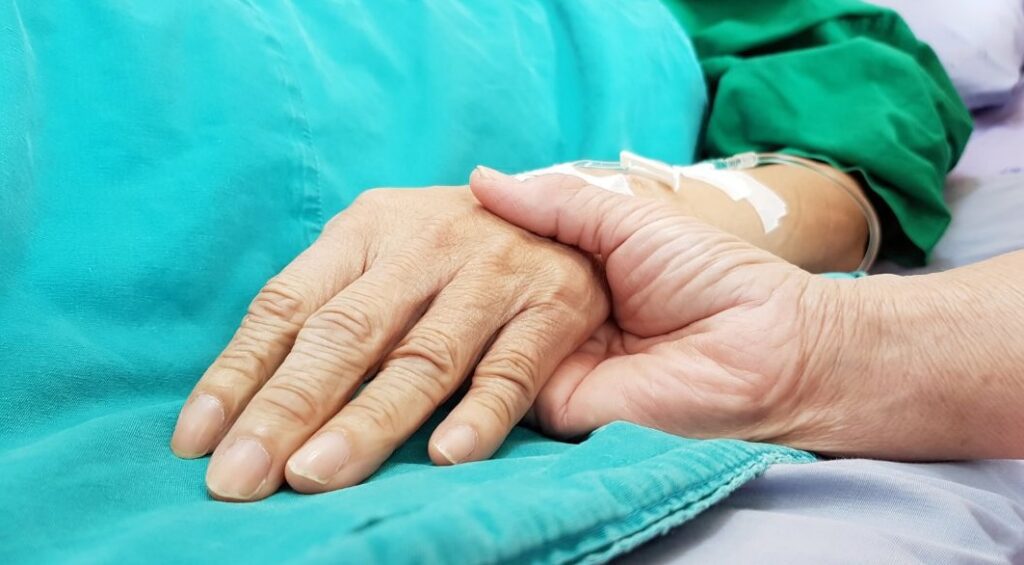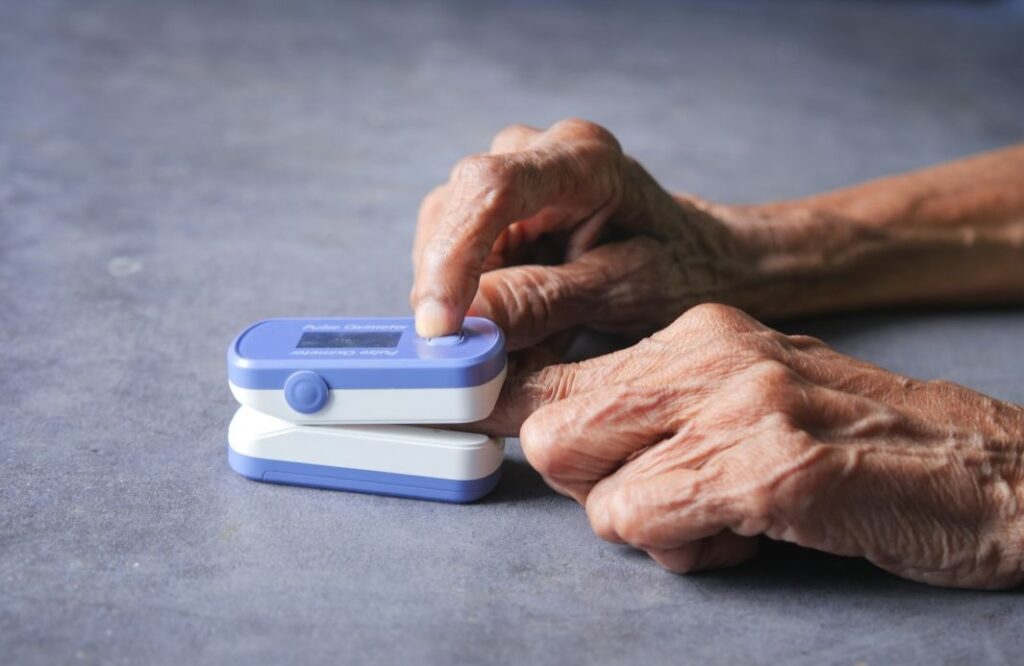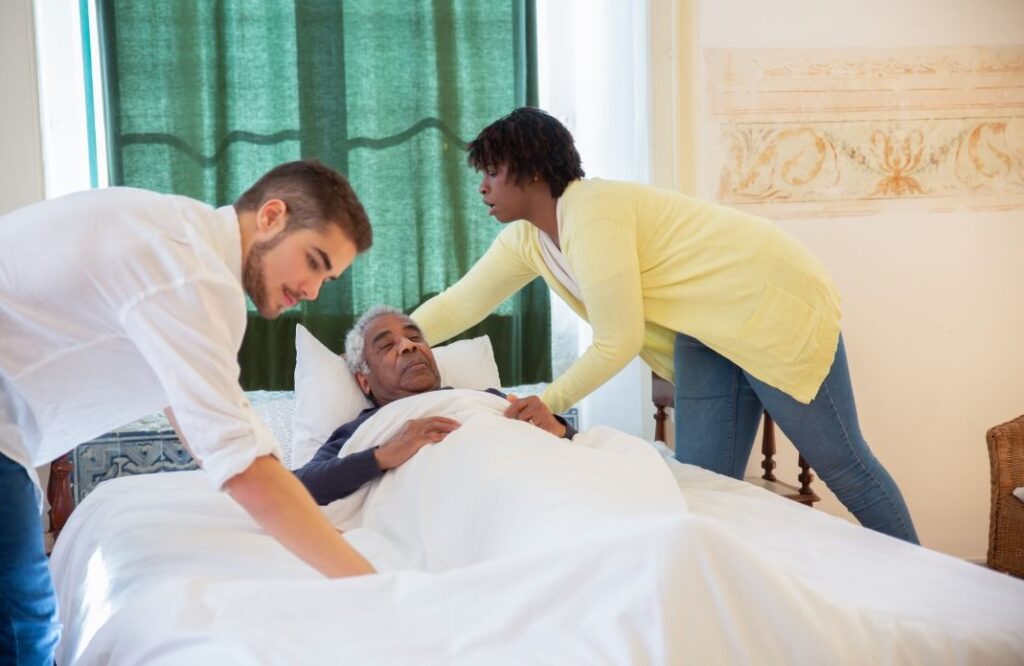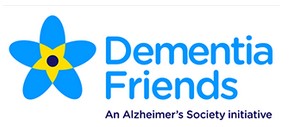Towards the end of a loved one’s life, recognising the end-of-life signs becomes critically important.
This knowledge is invaluable for live-in carers, medical practitioners, and family members who are intimately involved in the care of those nearing their final moments.
Understanding these signs not only prepares us to provide the most compassionate end-of-life care possible but also helps in mentally and emotionally prepare for the inevitability of loss.
It’s crucial to approach this topic with empathy, ensuring that our loved ones are comfortable, dignified, and surrounded by care during their end-of-life signs in their final hours.
1. Loss of Consciousness

One of the most poignant signs of the end-of-life is the loss of consciousness.
This state of unresponsiveness signals that the body is conserving energy for its most basic functions.
It’s a natural progression indicating that the end is near.
Carers should focus on making the environment peaceful, speaking gently and reassuringly, even if it seems the person cannot hear.
This maintains a connection and ensures dignity in these final hours.
2. Changes to Skin Colour
Changes in skin colour, including pallor and mottling, are visual signs that the body’s circulation is decreasing.
This happens as the heart begins to slow, and blood flow is prioritised to the most vital organs.
Live-in carers should remember that these changes are natural and should continue to provide gentle skin care, ensuring the individual’s comfort and preserving their dignity as much as possible but to be conscious of any significant colour changes which could indicate other health concerns.
3. Irregular and Noisy Breathing

Irregular and noisy breathing, such as Cheyne-Stokes respiration, is one of the common end-of-life signs and symptoms.
This pattern is characterised by a gradual increase in breathing followed by a gradual decrease and, finally, a temporary cessation of breathing.
It’s a direct reflection of the body’s reduced ability to regulate its functions.
Providing a calm, quiet environment and reassurance can help ease this process for both the individual and their loved ones.
4. Glassy, Teary Eyes
The appearance of glassy or teary eyes is a sign that the body’s hydration levels are diminishing, and the blink reflex is decreasing.
Help can be given by gently moistening the eyes with a damp cloth, which can provide comfort and help maintain dignity during these moments.
5. Weak Pulse

A weakening pulse is an indication of the heart’s diminishing ability to pump blood effectively.
Monitoring for changes in pulse, particularly when being mindful of signs of end-of-life in elderly people, can provide the carer with valuable information.
It’s important to approach this sign with sensitivity, ensuring the person remains as comfortable as possible.
6. Hallucinations
Hallucinations or delusions may occur as the brain receives less oxygen. Understanding that these experiences, although potentially distressing, are normal.
Maintaining a calm and soothing presence can ease the individual’s anxiety and confusion during these moments.
7. Cold Limbs

As circulation decreases, extremities such as hands and feet may become cold to the touch.
This sign indicates the body’s natural prioritisation of blood flow to vital organs.
Providing warmth through blankets and maintaining a gentle touch can offer comfort and support during this time.
8. Decreased Urine Output
A decrease in urine output is a clear indicator of reduced kidney function and fluid intake, signalling the body’s conservation of resources as it prepares for the final stages.
This sign should be kept well in the mind of live-in carers, as it highlights the importance towards the comfort and hygiene of the individual.
Adapting care practices becomes vital, with a focus on gentle, respectful handling to prevent discomfort.
Additionally, this change necessitates vigilance for any signs of discomfort or infection that might require palliative interventions.
It’s a delicate balance, ensuring that dignity is upheld through attentive, compassionate care, even as the body’s natural functions wane.
9. Fever
As the body’s immune response diminishes in the final hours, a fever can develop, indicating underlying processes at work as life draws to a close.
Managing fever at this stage focuses squarely on comfort rather than aggressive treatment, recognising the importance of quality of life over curative measures.
Simple, non-invasive measures like applying a cool cloth to the forehead or ensuring a ventilated room can provide significant relief.
This approach not only aids again in maintaining the individual’s dignity but also in comforting family members and live-in carers, reassuring them that their loved one is receiving care that prioritises their well-being and comfort.
Furthermore, such care strategies underscore the ethos of palliative care – to alleviate suffering and provide support in the end-of-life journey.
Through these compassionate practices, this can help ensure a peaceful transition, embodying the essence of dignified, respectful care in the final hours.
Recognising these key points provides a framework for offering the most compassionate and appropriate care during what are the signs of the end-of-life.
Understanding these signs enables us to prepare both practically and emotionally for the inevitable, ensuring that our loved ones receive the appropriate care and utmost dignity they deserve in their final moments.
For more detailed support and information on end-of-life care, contact our team at IP Live-In Care, who are ready to carefully and considerately discuss the options available.

